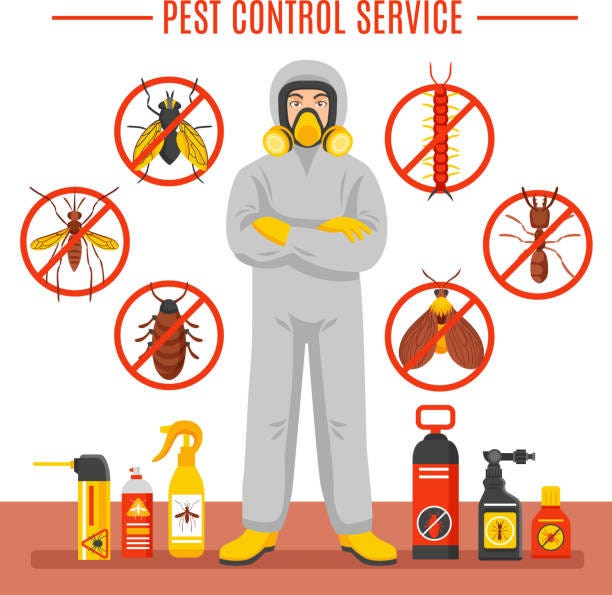Experienced A1 Exterminators Charlotte NC - Quick and Reliable Solutions
Experienced A1 Exterminators Charlotte NC - Quick and Reliable Solutions
Blog Article
Bed Bug Therapy Malfunction: Comparing Chemical Vs. Non-Chemical Solutions
In the world of bug control, specifically when dealing with the persistent concern of bed bugs, the selection between chemical and non-chemical treatment options can be a pivotal one. Both techniques supply distinctive benefits and downsides, influencing aspects such as performance, security considerations, and total cost. By examining the nuanced information of each approach, a clearer understanding of which path to seek in attending to a bed insect invasion can be obtained.
Effectiveness of Chemical Therapies
Chemical therapies for bed pest infestations have been extensively recognized for their potent and rapid effectiveness in eradicating these pests. When thinking about the effectiveness of chemical treatments, it is critical to recognize that they can give a thorough and fast remedy to a bed insect issue. Specialist exterminators commonly rely upon insecticides to target bed bugs at various stages of their life cycle, consisting of fairies, grownups, and eggs. These chemicals typically function by disrupting the bed bugs' anxious system, causing paralysis and eventual death.
Additionally, chemical treatments have the benefit of providing recurring effects, meaning that they can proceed to get rid of bed insects also after the preliminary application. This residual action is particularly helpful in combating any prospective re-infestations. Furthermore, the fast activity of chemical therapies can bring relief to people facing severe bed bug infestations, enabling them to reclaim control of their living spaces quickly.
Security Concerns With Chemical Solutions
One crucial facet that requires careful factor to consider when making use of chemical solutions for bed insect therapy is ensuring the safety and security of residents and the environment. Exposure to specific chemicals utilized in bed pest treatments can lead to breathing issues, skin irritability, or various other negative responses, particularly in people with pre-existing conditions or sensitivities.
Moreover, the ecological influence of chemical solutions is another substantial factor to consider. Some pesticides used in bed insect treatments might be unsafe to helpful pests, wild animals, and ecological communities if they seep into the soil or water systems. It is necessary to use chemical treatments carefully, adhering to security standards, and taking into consideration less hazardous options to mitigate these threats and ensure the effective and secure monitoring of bed bug invasions.
Benefits of Non-Chemical Strategies
Considering the potential safety and security issues and environmental influence connected with chemical solutions for bed insect therapy, checking out non-chemical methods presents an appealing choice with a number of distinctive benefits. Non-chemical treatments are environmentally friendly, as they do not add to air or water contamination, making them a lasting selection for insect control.
In addition, non-chemical solutions can be effective in targeting bed bugs, including hard-to-reach areas where chemical treatments might not permeate - A1 bed bug exterminator charlotte. Approaches such as warm treatment, vacuuming, heavy steam cleansing, and cushion coverings give complete elimination without the use of harmful chemicals.
Limitations of Non-Chemical Treatments

In addition, non-chemical therapies typically require several applications to achieve successful eradication. This can be taxing and might not always guarantee complete elimination of all bed pests and their eggs, especially in hard-to-reach or concealed places.
Additionally, the success of non-chemical treatments greatly counts on correct implementation and thoroughness, which can be challenging for people content without professional experience. Poor application of non-chemical techniques may lead to incomplete removal, bring about persistent invasions and the requirement for additional therapies.
Consequently, while non-chemical treatments have their benefits, it is important to acknowledge these limitations and consider them when identifying one of the most efficient strategy for taking care of bed bug problems.
Cost Comparison: Chemical Vs. Non-Chemical Options
Provided the limitations connected with non-chemical treatments, a crucial facet to review in the context of bed pest monitoring is the expense comparison between chemical and non-chemical alternatives. In comparison, non-chemical treatments like heat treatment or heavy steam can be much more costly, with costs ranging from $1,000 to $6,000 for an entire home. While the initial expense of chemical therapies may appear lower, several treatments might be needed to fully get rid of the infestation, potentially enhancing the overall cost.
Final Thought

Taking into consideration the possible safety and security issues and ecological effect connected with chemical solutions for bed insect therapy, exploring non-chemical methods offers an appealing alternative with several distinct benefits.Offered the constraints connected with non-chemical treatments, a crucial facet to review in the context of bed bug management is the price comparison in between chemical and non-chemical choices. In contrast, non-chemical treatments like warm treatment or steam can be a lot her latest blog more expensive, with costs ranging from $1,000 to $6,000 for a whole home. While the preliminary price of chemical treatments might seem lower, several treatments might be needed to totally get rid of the invasion, potentially boosting the total price.In verdict, when contrasting chemical and non-chemical bed insect treatment choices, it is vital to my site consider performance, safety, benefits, restrictions, and cost.
Report this page